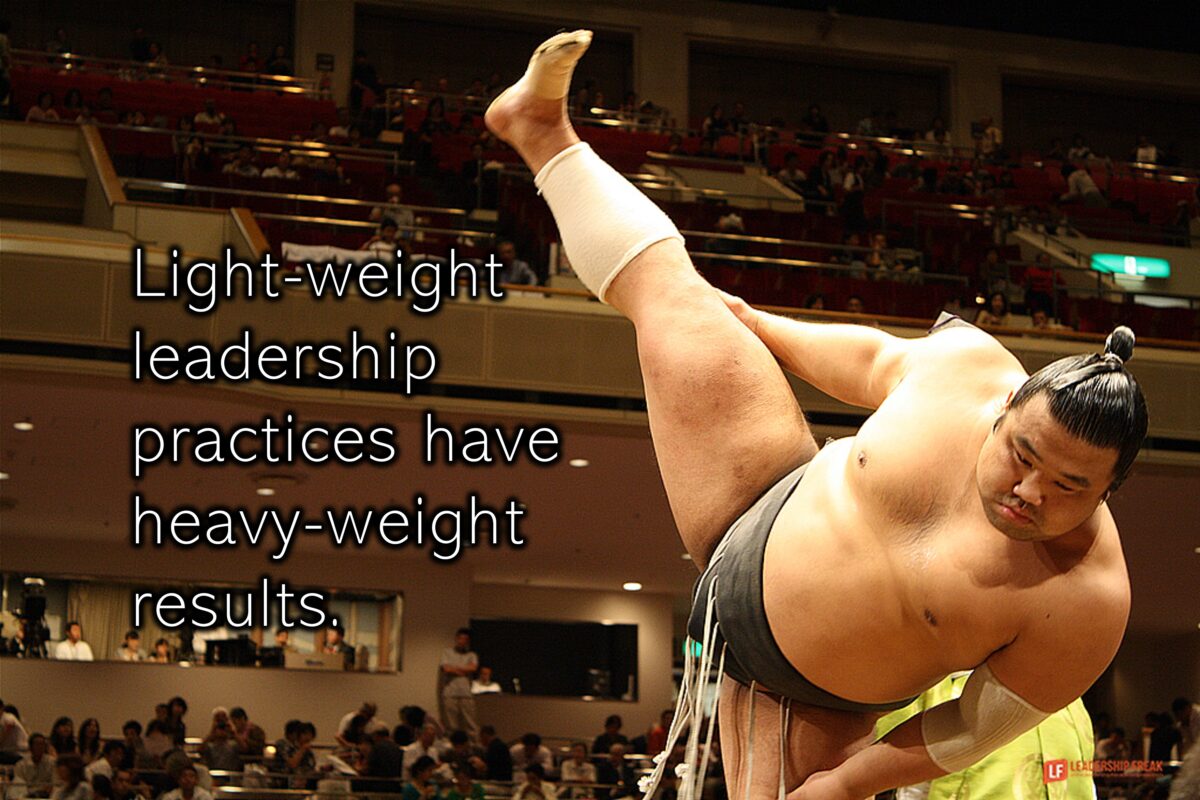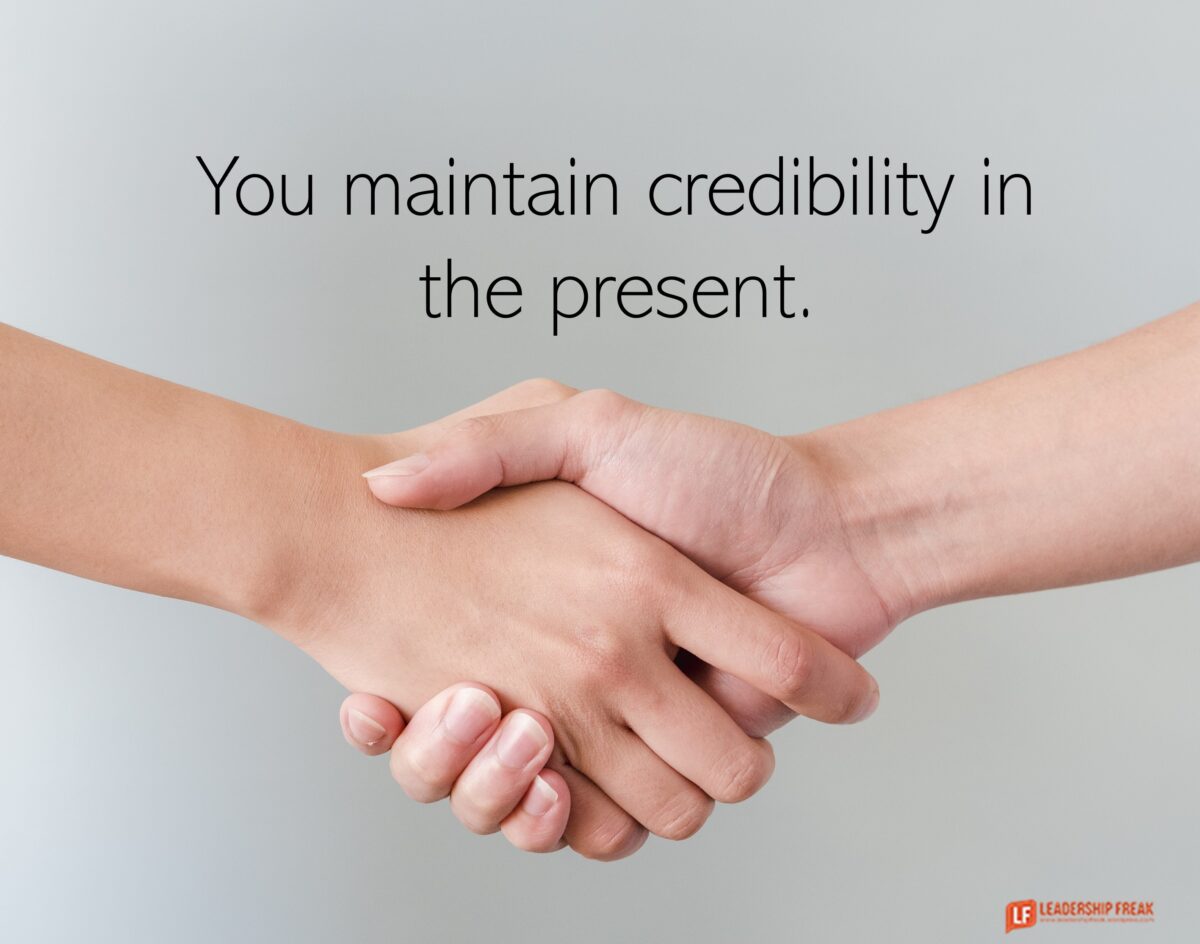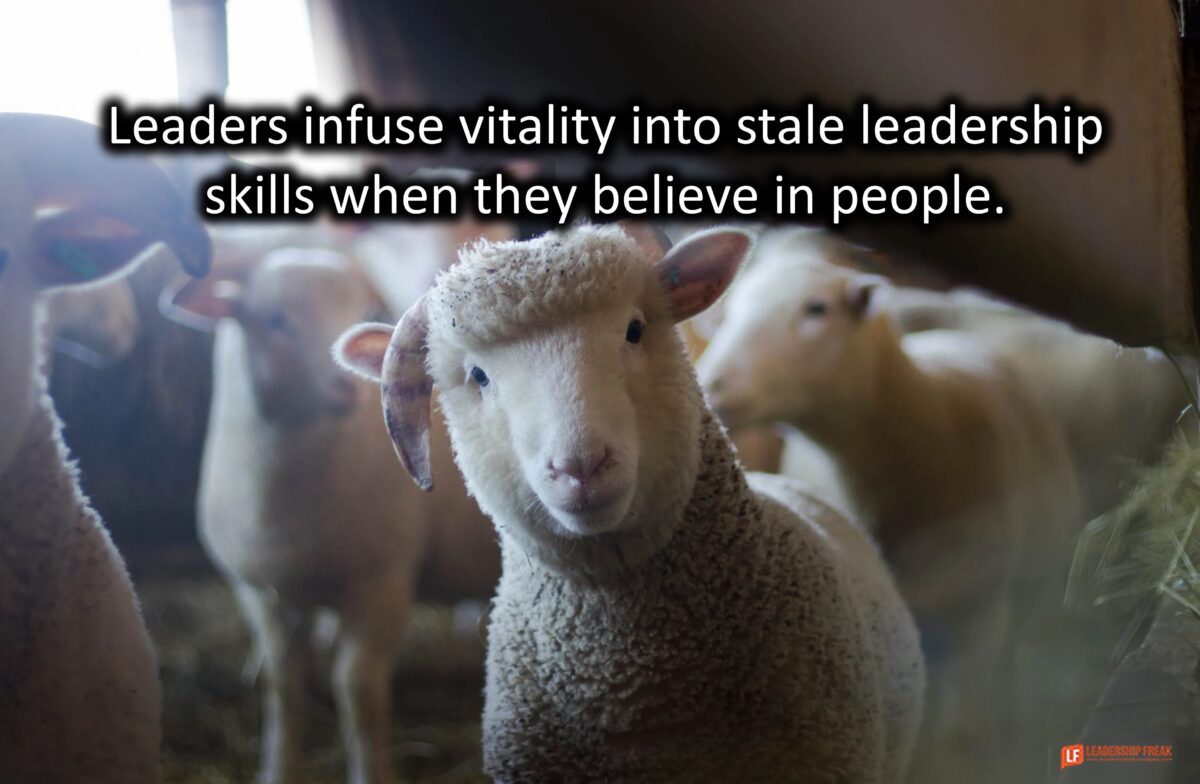7 Light-Weight Leadership Practices that Deliver Heavy-Weight Results
Tiny is huge.
“Manny” Yarborough held the Guinness World Record for the heaviest living athlete. He exceeded 800 pounds before his death in 2015. You might feel like a skinny kid facing “Manny” Yarborough, but there are light-weight leadership practices that provide heavy-weight results.
Don’t be impressed with size. Bees carry pollen. Worms dig tunnels that freshen soil. Hummingbirds would win the 100-meter dash against Usain Bolt.
Tiny leadership practices can change your life.
7 Light-weight leadership practices:
- Exercise for 1-minute 3X a day. 3-4 minutes a day of vigorous exercise was linked to reducing the risk of dying from cardiovascular disease by about 48%. (Time)
- Write in a gratitude journal 3X a week to shift your attitude.
- Take 3-minutes of quiet time before every meeting to refocus. 1-minute will do in a pinch.
- Show up with an intention.
- Learn one new thing every day. (Read Leadership Freak. It takes about 90 seconds.)
- Read for a few minutes before you turn out the light for bed.
- Practice self-reflection for less than 5-minutes a day.
Benefits of self-reflection:
A coaching client recently began a short self-reflection practice. He chose five questions to ask himself at the end of each day. It takes less than five-minutes.
Don’t let your mind wander during self-reflection. A wandering mind goes to dark places. Give your brain something to reflect on. My client chose:
- I started the day with this intention (__________). Did it happen?
- Why did it happen? Why not?
- What did I learn?
- What do I want to do differently?
- What do I need to do tomorrow?
He says, “I feel more at ease with myself. I was reminded of positive things that happened and progress made. Challenges felt smaller after I wrote them down. I woke up more focused having done the thinking the night before.”
What light-weight leadership practices have elevated your leadership?
What self-reflection questions can you suggest?
Like this:
Like Loading…































